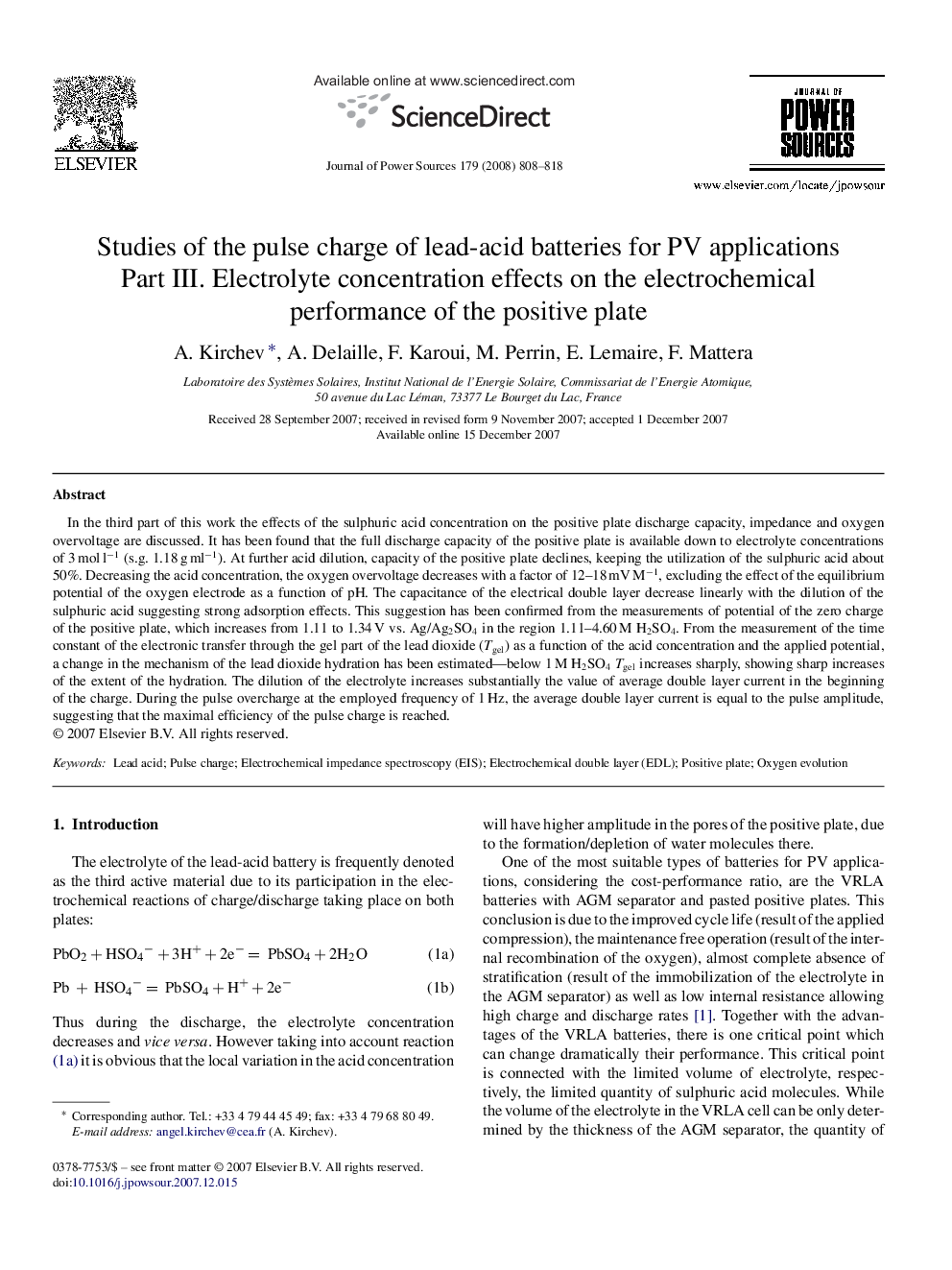| کد مقاله | کد نشریه | سال انتشار | مقاله انگلیسی | نسخه تمام متن |
|---|---|---|---|---|
| 1294708 | 973633 | 2008 | 11 صفحه PDF | دانلود رایگان |

In the third part of this work the effects of the sulphuric acid concentration on the positive plate discharge capacity, impedance and oxygen overvoltage are discussed. It has been found that the full discharge capacity of the positive plate is available down to electrolyte concentrations of 3 mol l−1 (s.g. 1.18 g ml−1). At further acid dilution, capacity of the positive plate declines, keeping the utilization of the sulphuric acid about 50%. Decreasing the acid concentration, the oxygen overvoltage decreases with a factor of 12–18 mV M−1, excluding the effect of the equilibrium potential of the oxygen electrode as a function of pH. The capacitance of the electrical double layer decrease linearly with the dilution of the sulphuric acid suggesting strong adsorption effects. This suggestion has been confirmed from the measurements of potential of the zero charge of the positive plate, which increases from 1.11 to 1.34 V vs. Ag/Ag2SO4 in the region 1.11–4.60 M H2SO4. From the measurement of the time constant of the electronic transfer through the gel part of the lead dioxide (Tgel) as a function of the acid concentration and the applied potential, a change in the mechanism of the lead dioxide hydration has been estimated—below 1 M H2SO4Tgel increases sharply, showing sharp increases of the extent of the hydration. The dilution of the electrolyte increases substantially the value of average double layer current in the beginning of the charge. During the pulse overcharge at the employed frequency of 1 Hz, the average double layer current is equal to the pulse amplitude, suggesting that the maximal efficiency of the pulse charge is reached.
Journal: Journal of Power Sources - Volume 179, Issue 2, 1 May 2008, Pages 808–818